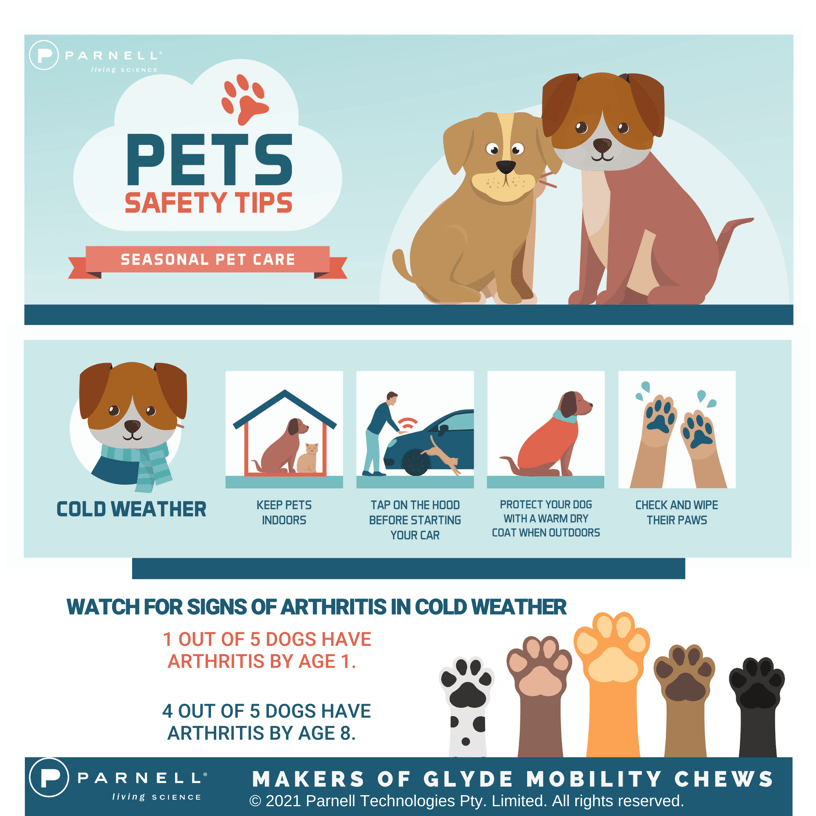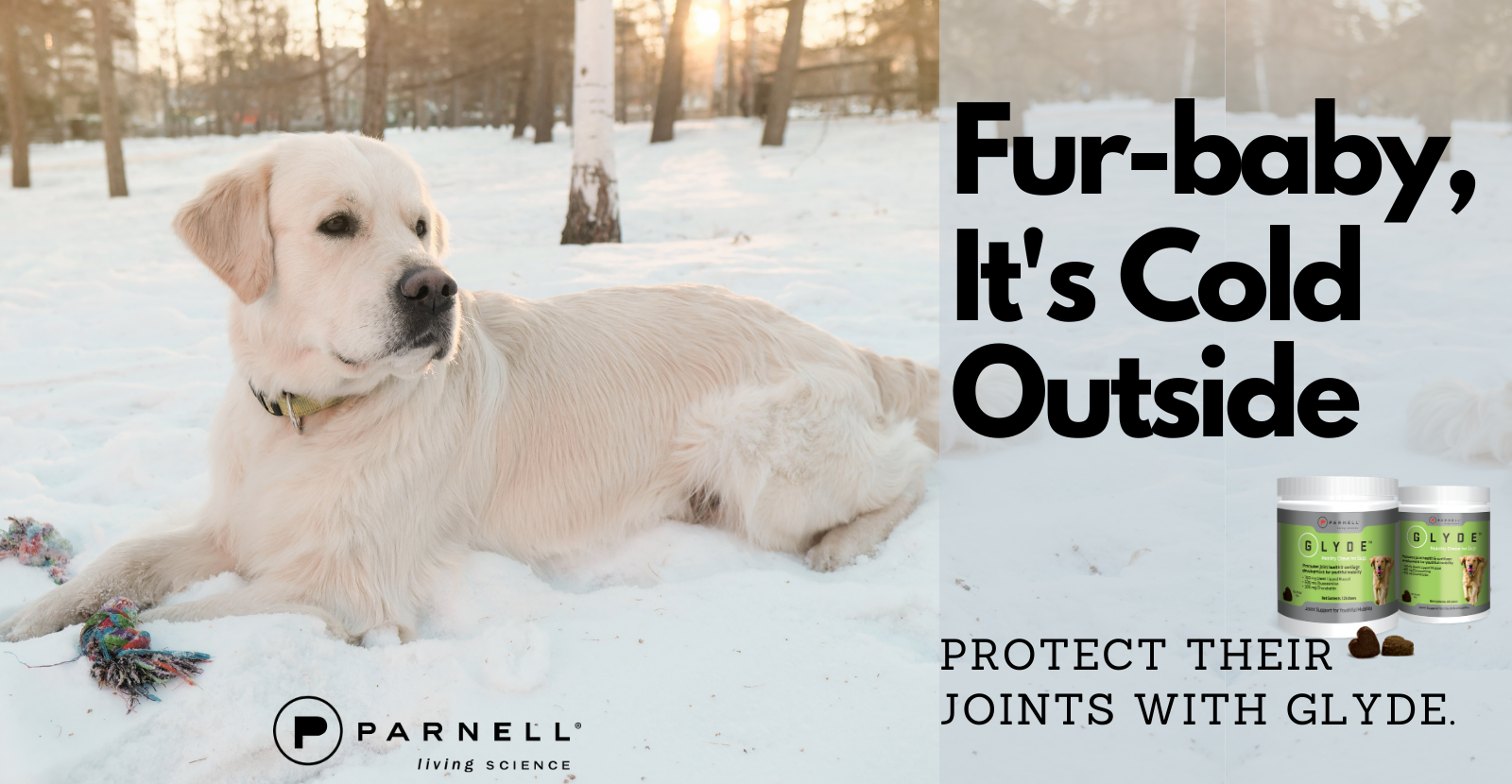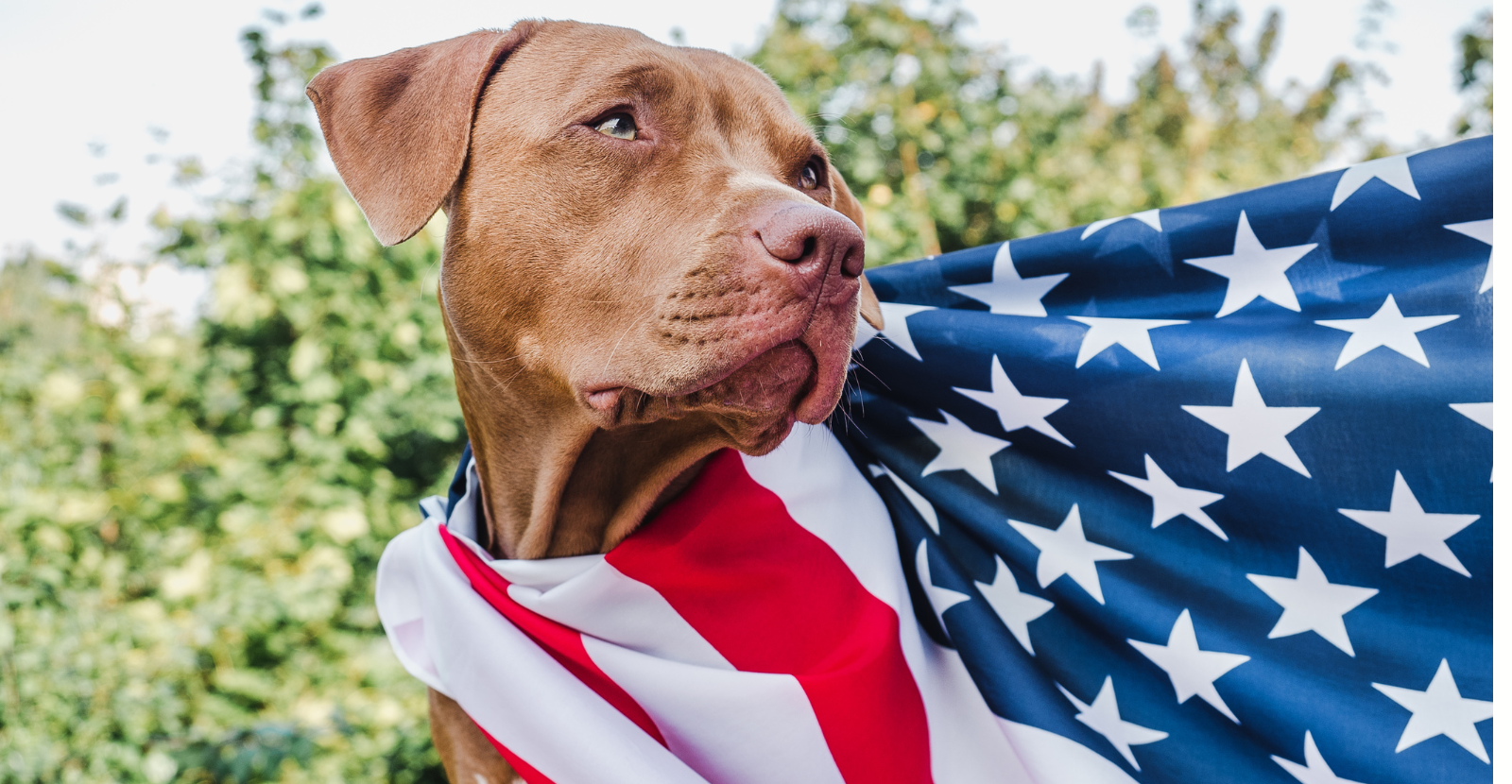Winter is hitting much of the U.S. hard this week. This cold snap is a good reason to share some cold-weather pet health tips! Read on for the details, including a helpful infographic to illustrate.
It's always good to know about the weather before you head out. What is the forecast for your area? Are you by the fireplace more and covered in a blanket? This is because when it’s cold outside, we change our habits to acclimate to the weather. We wear warmer coats, use gloves and hats, and stay inside more. Our dogs have built-in "fur coats," but when do they need a bit more insulation? How long can they be outside in freezing temperatures? We try to answer these cold-weather pet health tips for dogs!

Now, read on for further detail:
When is it too cold to take your dog outside?
It is equally dangerous to have your pet in the car in freezing temperatures just as it is in the sweltering heat of summer. Cars quickly go from garage temperatures to outside freezing temperatures as soon as you park the car and turn off the engine. If your plan is to leave your fur-baby in the car while you go inside a store, the best plan is to leave them behind in the warmth and safety of your home. A big bonus: receive warm doggie kisses when you get home!
When your dog goes outside to do their business, be sure you have them on a leashed walk or in their enclosed backyard. When you let them out in the yard, they will tell you when they want to come back in.
If you are interested in taking a walk with them outside, here is a good baseline to keep in mind:
- Small to medium-sized dogs need to be inside when it's below 40 degrees.
- Larger dogs are able to tough it out longer but should be inside when it's 35 degrees.
- If you see your dog trembling outside, this is a sure sign they are too cold and you should bring them in!
Be sure your dog stays close to home and is on a leash if you are walking outside. Unfortunately, more pets are lost during winter than any other time of year. This is because snowfall covers scents which would usually help a lost pet find their way home. This is also a good reminder to be sure your pet’s collar has current contact information or they are microchipped. If someone else finds them, these resources are extremely important.
Here is a handy chart to illustrate when it's too cold to take your dog outside for longer than a brief period to do their business.
Protect Your Dog with a Warm Coat when Outdoors
While every dog is different, some have more fluff than others, and some dogs are meant for the cold weather. Depending on the thickness of their coats, it's a good idea to put on a sweater on shorter-haired dogs when the temperatures are colder, around the freezing mark.
You know your dog, so dress them appropriately when heading outside in freezing temperatures. If you have a Bernese Mountain dog or Saint Bernard, most likely they won’t need a coat to protect them from the temperatures as they have their own thick, long coat of hair. But if you have a dog with shorter hair, such as a Boston terrier or Chihuahua, put a sweater or coat on them to keep them warm when they are outside. Even Labrador Retrievers have shorter hair and would enjoy an extra layer. Hypothermia and frostbite can happen to dogs, just as it can happen to you. If you see your dog shivering, this is a sign they need to be inside.
Check and Wipe their Paws
When walking outside on the sidewalk, your dog's paws will be exposed to winter chemicals such as salt or anti-freeze. Be sure to wipe your dog’s paws with a moist cloth when you return from walks. This will clean their paws and prevent them from licking it off and getting ill.
Just as the cold weather chaffs human skin, this can also happen to your dog’s paws. There are now a variety of products you can use to moisturize the pads of their paws, from a dog-specific balm to a non-scented lotion or petroleum jelly.
Is it really cold where you are? You may want to invest in doggie booties to go outside in. They have made tremendous improvements in dog boots and socks. A quick internet search online will find dog boots that actually stay on your dog’s feet.
Does My Dog have Dog Arthritis symptoms?
According to Petmd.com, arthritis is fast becoming one of the most common health problems seen by veterinarians. Just as in humans, cold weather can make joints ache more, thus the signs of arthritis in dogs become more apparent.
Unfortunately, 4 out of 5 dogs by age 8 will have signs. An even more surprising statistic is 1 out of 5 dogs will have signs of arthritis by the time they are one year old!
Some common signs of arthritis to look for include:
- Hesitation or visible discomfort when getting up from sleeping
- Hesitation or visible discomfort when jumping into a car, going up stairs or getting out of bed
- Lack of willingness to play as often as they once did
- Less activity, more sleeping
As humans and dogs age, arthritis becomes more likely. For dogs, there are certain breeds with a higher propensity for osteoarthritis in dogs. Take the risk assessment to find out. There are many risk factors associated including breed, size and weight of dogs. Find out the risk of your pets by clicking this link: Take the dog arthritis quiz
You will see the initial assessment based on your answers and receive an email with the results. Quick and easy!
Joint Pain Relief for Dogs
Glyde® Mobility Chews for dogs is one of the best supplements on the market to help your dog's joints feel better. Glyde has proven key ingredients working to stop the painful signs of arthritis and improve their overall joint health. Every dog wants to be more active. If you suspect your dog is less active or has joint pain associated to the changing temperatures, check out our store page and try Glyde today! Your dog will thank you for it. And the best thing is: they will think it's a treat! But you know it's good for them with powerful ingredients such as:
- New Zealand Green Lipped Mussel (GLM): A powerful anti-inflammatory
- Glucosamine: Reduces cartilage degradation
- Chondroitin Sulfate: Helps rebuild cartilage
Glyde can help keep your dog active in the cold, winter months!
No matter what you do, stay safe in cooler temperatures. Let's make 2023 a safe year with cold weather safety staying on top of our minds!




.png)

